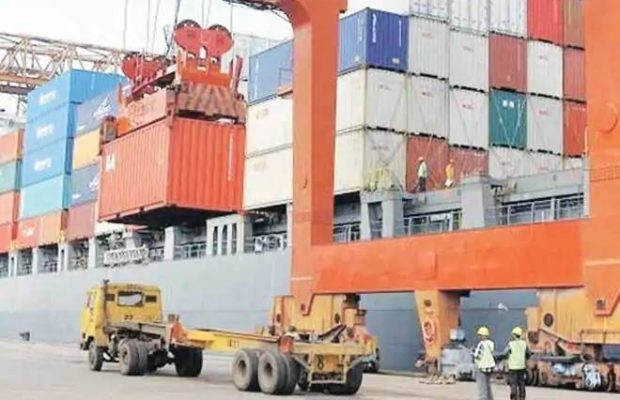Innumerable customs duty changes in the budget occupy 52 pages of tedious print. This entrenches the current protectionist. The earlier Atal Bihari Vajpayee era of BJP rule went for aggressive tariff-cutting, improving Indian competitiveness and spurring record GDP growth exceeding 8% in 2003-08. The Narendra Modi era is going steadily in the opposite direction, in both tariffs and growth.
When economic reforms began in 1991, India had a bewildering variety and range of import tariffs. Economist Sanjaya Lall attempted to list how many different rates India had and was told \’nobody knows\’. Some said the top rate was 300%. Others said it was far higher. Manmohan Singh\’s 1991 budget cut the maximum import duty to 150%, still of Himalayan dimensions.
High Tariff Walls
Duties were steadily reduced in subsequent years. Economists stressed import taxes raise the cost of production and erode export competitiveness, so a tax on imports becomes a tax on exports. Experts also said a wide range of import duties rates was irrational and created unwarranted windfalls. A multitude of rates encouraged misdeclaration to avoid taxes, corruption and endless litigation. The ideal tariff regime would be a standard tax rate with a minimum of exceptions for clearly defined goals. India went in this direction during the Vajpayee years, but no more.
Industrialists seek a low import duty on raw materials and higher ones on finished products to incentivise production. This can produce unwarranted windfalls. If a raw material bears 10% duty and the finished product bears 30% import duty, some will call it a 20% margin of protection. But if the processing adds only 20% in value, then the margin of protection is 100% of value added! If the value added is only 10% (which is often the case), the margin of protection is 200% of value added.
Modi came to power believing that reducing red tape corruption would kickstart rapid growth and millions of jobs. The price of oil crashed in his first year, spurring growth for a few years. But then growth decelerated, from 8.2% in 2016-17 to 3.7% in the pre-Covid year 2019-20. Exports, which grew rapidly till 2013, stagnated thereafter. The promised avalanche of jobs never came. Modi shifted his political emphasis from job creation to Hindu nationalism, which helped him win the 2019 election.
He then decided that his initial economic approach had failed, and opted for a new strategy of aatmanirbhar. He said this was not the old Nehruvian model of self-sufficiency, since he wanted India to produce for the whole world, not just for domestic consumption. The policy aimed to attract global giants to make India their global manufacturing hub.
Aatmanirbhar rests on two pillars: a production-linked incentive (PLI) for 14 selected industries, and a phased manufacturing programme (PMP) that raises import duties, first on finished products and then on components, to incentivise creation of a full value chain. Most successful countries have opted to become part of global value chains (GVCs), specialising in a few components and achieving global scale economies. India is aiming simultaneously to become a global player and build a full value chain at home, instead of integrating into GVCs.
Get Out and Compete
Many experts argue that this approach has only a small chance of success. China started with assembly and became world leader before trying backward integration. Vietnam has succeeded brilliantly as part of a GVC. India\’s attempt to achieve both global scale and backward integration is unusual and risky.
In theory, a country can create a new industry behind temporary tariff walls, achieve scale economies that make it competitive, and then abolish the tariff walls. Some East Asian economies did, indeed, follow this path. But this requires sunset clauses for tariffs and the political will to close industries that prove uncompetitive. Sunset clauses are missing in PMP schemes so far, including those elaborated in the budget.
The budget says the PMP for wrist-wearable devices will have a 20% tariff on finished goods, and tariffs rising over time to 15% on various components. Far from having sunset clauses, the duties are projected to keep rising to a peak in 2025-26. This sunrise ends at high noon, with no sunset in sight. It carries the danger of permanence.
The same sort of duty regime has been specified for the PMP on hearable devices. The PMP for smart meters levies 25% duty on the finished product and up to 20% on components, once again rising to a peak in 2025-26.
The first PMP sector was mobile phones. GoI claims success, since exports have shot up from $0.2 billion in 2017-18 to $1.2 billion in April-September of 2021-22. Imports fell from $3.5 billion to $0.5 billion. But imports of components also shot up. So, the net improvement is unclear. A study by the India Cellular and Electronics Association (ICEA) suggests that high import duties have hit export competitiveness, and offset the benefits of PLI.
Many more sectors will demand PLI. Given the risks, the government should say PLI will not be extended to additional sectors till the current 14 prove successful. That will be an essential damage limitation strategy.
This article was originally published in The Economic Times on February 22, 2022.


